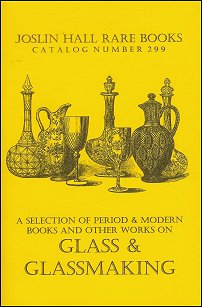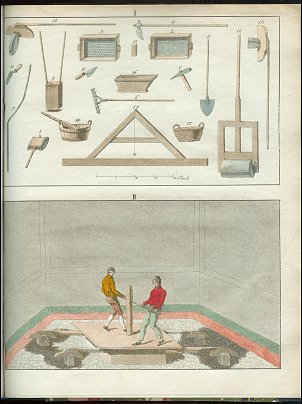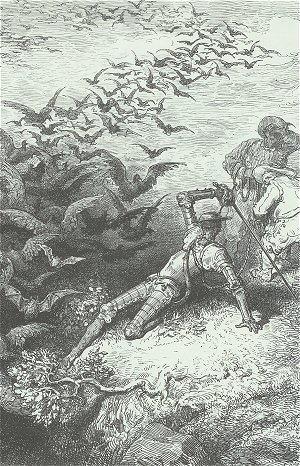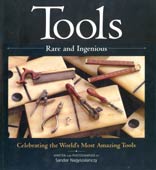 This op-ed piece from today's New York Times relates to one of the 20th century's more macabre collecting sagas. If I recall correctly, New York autograph & maunscript auctioneer Charles Hamilton once sold the relic, and wrote about it in one of his books, published in the 1970s. I had not heard much about it since then, but apparently it's back...Collect-Me-Nots
This op-ed piece from today's New York Times relates to one of the 20th century's more macabre collecting sagas. If I recall correctly, New York autograph & maunscript auctioneer Charles Hamilton once sold the relic, and wrote about it in one of his books, published in the 1970s. I had not heard much about it since then, but apparently it's back...Collect-Me-NotsBy JUDITH PASCOE
New York Times: May 17, 2007
THE owner of Napoleon’s penis died last Thursday in Englewood, N.J. John K. Lattimer, who’d been a Columbia University professor and a collector of military (and some macabre) relics, also possessed Lincoln’s blood-stained collar and Hermann Göring’s cyanide ampoule. But the penis, which supposedly had been severed by a priest who administered last rites to Napoleon and overstepped clerical boundaries, stood out (sorry) from the professor’s collection of medieval armor, Civil War rifles and Hitler drawings.
The chances that Napoleon’s penis would be excised so that it could become a souvenir were improved by his having lived and died at a moment when the physical remains of celebrities held a strong attraction. Shakespeare didn’t become Shakespeare until the dawn of the romantic period, when his biography was written, his plays annotated and his belongings sought out and preserved. Trees that stood outside the bard’s former homes were felled to provide Shakespearean lumber for tea chests and tobacco stoppers.
After Napoleon’s capture at Waterloo, his possessions toured England. His carriage, filled with enticing contents like a gold tongue scraper, a flesh brush, “Cashimeer small-clothes” and a chocolate pot, drew crowds and inspired the poet Byron to covet a replica. When Napoleon died, the trees that lined his grave site at St. Helena were slivered into souvenirs.
The belief that objects are imbued with a lasting essence of their owners, taken to its logical extreme, led to the mind-set that caused Mary Shelley to keep her husband’s heart, dried to a powder, in her desk drawer. Of course, relic collecting long predates the romantic period; medieval pilgrims sought out fragments of the True Cross. In the aftermath of the Reformation, religious relics that had been ejected from monasteries joined secular collections that freely intermingled belemnites with saints’ finger bones. When Keats died, his hair took on the numinous appeal of a religious artifact.
Napoleon’s penis was not the only Napoleonic body part that became grist for the relic mill. Two pieces of Napoleon’s intestine, acquired by the Museum of the Royal College of Surgeons of England in 1841, provoked a long-simmering debate beginning in 1883. That year, Sir James Paget called the specimens’ authenticity into question, contrasting their seemingly cancerous protrusions to the sound tissue Napoleon’s doctor had earlier described. In 1960, the dispute continued in The Annals of the Royal College of Surgeons of England, long after the intestine pieces had been destroyed during a World War II air raid.
Dr. Lattimer, a urologist, could claim a professional interest in Napoleon’s genitalia. Not so its previous owner, the Philadelphia bookseller and collector A. S. W. Rosenbach, who took a “Rabelaisian delight” in the relic, according to his biographer, Edwin Wolf. When Rosenbach put the penis on display at the Museum of French Art in New York, visitors peered into a vitrine to see something that looked like a maltreated shoelace, or a shriveled eel.
Whether the object prized by Dr. Lattimer was actually once attached to Napoleon may never be resolved. Some historians doubt that the priest could have managed the organ heist when so many people were passing in and out of the emperor’s death chamber. Others suggest he may have removed only a partial sample. If enough people believe in a possibly spurious penis, does it become real?
The pathos of Napoleon’s penis — bandied about over the decades, barely recognizable as a human body part — conjures up the seamier side of the collecting impulse. If, as Freud suggested, the collector is a sexually maladjusted misanthrope, then the emperor’s phallus is a collector’s object nonpareil, the epitome of male potency and dominance. The ranks of Napoleon enthusiasts, it should be noted, include many alpha males: Bill Gates, Newt Gingrich, Stanley Kubrick, Winston Churchill, Augusto Pinochet. Nevertheless, the Freudian paradigm has never accounted for women collectors, nor does it explain the appeal of collections for artists like Lisa Milroy, whose paintings of cabinet handles or shoes, arrayed in series, animate these common objects.
It’s time to let Napoleon’s penis rest in peace. Museums are quietly de-accessioning the human remains of indigenous peoples so that body parts can be given proper burial rites. Napoleon’s penis, too, should be allowed to go home and rejoin the rest of his captivating body.
Judith Pascoe, a professor of English at the University of Iowa, is the author of “The Hummingbird Cabinet: A Rare and Curious History of Romantic Collectors.”















 Glass and the Book Elves have always been uneasy companions, whether we are talking about flying croquet balls going through plate glass windows or the fact that if you are going to buy a rare and expensive Lalique clock on Ebay you had better make sure the trademark is spelled with a "q" and not a "k"...
Glass and the Book Elves have always been uneasy companions, whether we are talking about flying croquet balls going through plate glass windows or the fact that if you are going to buy a rare and expensive Lalique clock on Ebay you had better make sure the trademark is spelled with a "q" and not a "k"...



 In the 19th and early 20th centuries it was accepted practice to furnish museums with casts of all types, from classical statues to trilobites, and I thought I'd share some illustrations from an interesting catalog, published in 1866, which served the latter trade.
In the 19th and early 20th centuries it was accepted practice to furnish museums with casts of all types, from classical statues to trilobites, and I thought I'd share some illustrations from an interesting catalog, published in 1866, which served the latter trade.












 I'm happy to say that the new edition of the Chipstone Foundation's acclaimed anthology of American furniture essays is available-
I'm happy to say that the new edition of the Chipstone Foundation's acclaimed anthology of American furniture essays is available-


 We've just recieved a great new book on Philadelphia Empire furniture!
We've just recieved a great new book on Philadelphia Empire furniture!






 We have an interesting 18th century silk-related title in
We have an interesting 18th century silk-related title in 




 It’s going to be Saint Patrick’s Day soon, and since it involves food and beer, it’s one of the Book Elves favorite holidays. They’ve always thrown a big party to celebrate, but after last year’s “mishap”, and the ensuing court costs, they decided to do a dry run a few weeks ahead of time this year.
It’s going to be Saint Patrick’s Day soon, and since it involves food and beer, it’s one of the Book Elves favorite holidays. They’ve always thrown a big party to celebrate, but after last year’s “mishap”, and the ensuing court costs, they decided to do a dry run a few weeks ahead of time this year. At this time of year we have a huge crowd of birds at the feeders, from early in the morning until dusk. But the three pairs of cardinals, several woodpeckers, bunches of wrens, finches, doves and other assorted little birds (plus half a dozen fat squirrels) are now being joined on a regular basis by a young red-tailed hawk. He first showed up a week or so ago, sitting in the tall tree behind the carriage house, and has lately taken to sitting on the railing of the deck, or in the small fruit tree we hang the feeders on just beside it. I am afraid he may not be here for the seeds...
At this time of year we have a huge crowd of birds at the feeders, from early in the morning until dusk. But the three pairs of cardinals, several woodpeckers, bunches of wrens, finches, doves and other assorted little birds (plus half a dozen fat squirrels) are now being joined on a regular basis by a young red-tailed hawk. He first showed up a week or so ago, sitting in the tall tree behind the carriage house, and has lately taken to sitting on the railing of the deck, or in the small fruit tree we hang the feeders on just beside it. I am afraid he may not be here for the seeds...